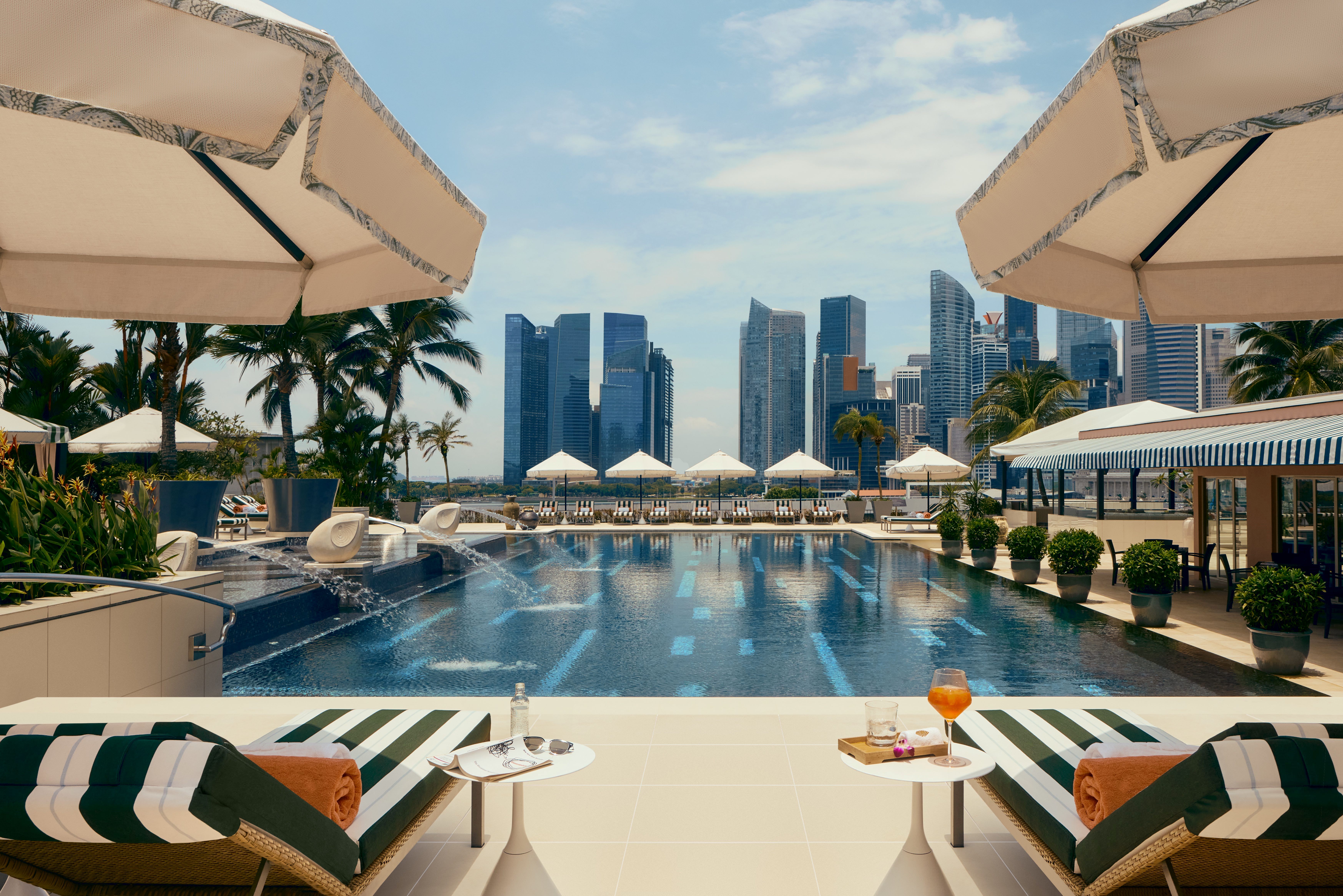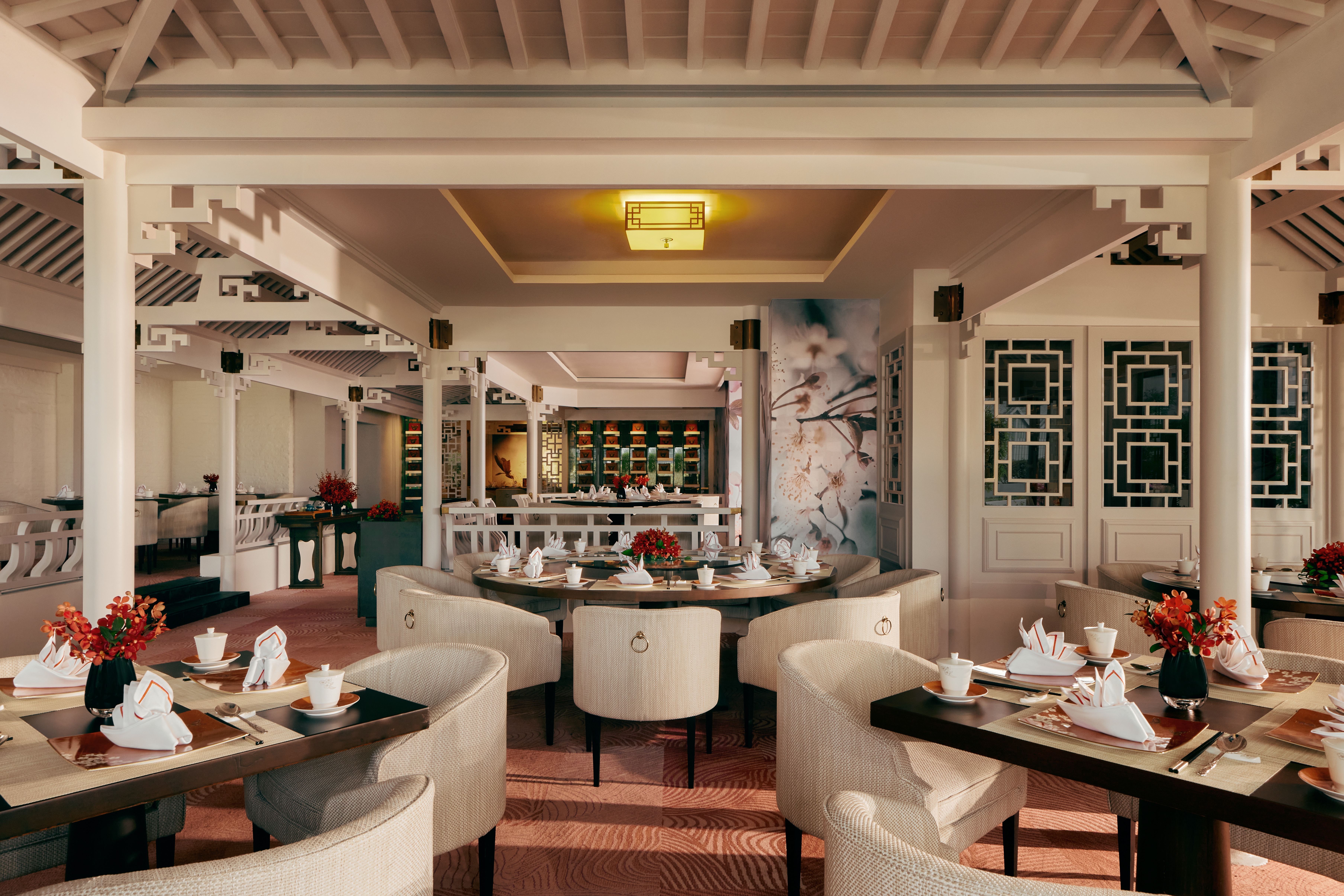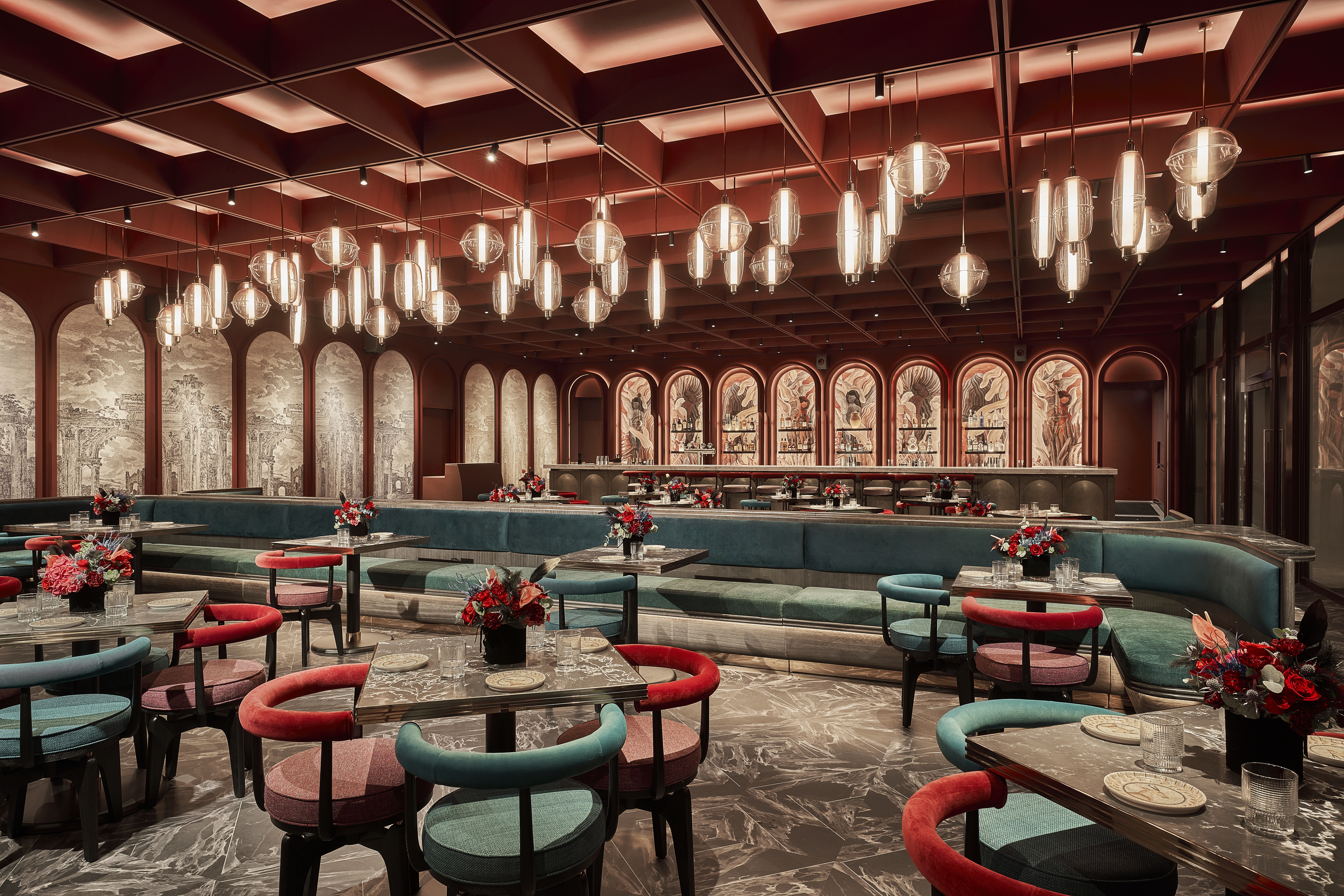Mandarin Oriental Singapore emerges from a six-month overhaul
The newly refurbished Mandarin Oriental Singapore slots into the city’s skyline with a look inspired by the tropics

As Mandarin Oriental Singapore reopens its doors, it forms part of an iconic seaside context – when it comes to cityscapes, there are few as recognisable as Marina Bay, the downtown area built on 360 hectares of reclaimed land. Today the district is defined by striking silhouettes such as the Moshe Safdie-designed Marina Bay Sands, its three 194m sloping towers dramatically linked at the top by the expansive SkyPark, the Lotus-inspired ArtScience museum – also designed by Safdie – and the Esplanade Theatres, nicknamed the ‘durian’ buildings for their resemblance to the fruit’s curved, spiky outer shell.

Mandarin Oriental Singapore: the history
But back in the 1980s, it was late American architect John Portman who first set the bar with his neo-futuristic designs for Marina Mandarin (now Parkroyal Collection Marina Bay) and Mandarin Oriental, both of which share no-frills concrete exteriors and signature, soaring light-filled atriums inside.
For the latter, Portman celebrated the Mandarin Oriental group’s fan logo by creating a central court using the shape of a quadrant of a circle with a sizable base that gently tapers inwards towards the ceiling.

Now, as part of the hotel’s six-month overhaul by Kuala Lumpur-based practice DesignWilkes, this iconic atrium has been appropriately highlighted with the designers cladding it in clay – a reference to Singapore’s roof tiles – that lightens in a gradient effect as it climbs higher. 'Singapore was the main source of inspiration for my design,’ explains Jeffrey A Wilkes, the firm’s principal. 'I wanted to use colours, textures and a sense of the tropics.’

Indeed, in following the brief to ‘rejuvenate, refresh, and create spaces for socialising’, Wilkes has transformed the hotel into an explosion of colour, florals and greenery that nods to the hotel’s tropical location.
The lobby is now a lively gathering spot, home to the vibrant Mandarin Cake Shop with a playful pastel palette that mirrors the sweet treats on offer, while behind the reception desk, a specially commissioned mural, by artists Keng Wai Lee and Marco Araldi, pays homage to the Nyonya and Baba heritage with its fresh use of colours representing tropical flowers and greenery.

Elsewhere, the hotel’s plethora of drinking and dining spaces have also been refreshed. This includes Embu, the international all-day restaurant, which takes its cues from the Tembusu (one of Singapore’s heritage trees) with stylised timber frames that reference the tree’s distinct perpendicular branching.
Wallpaper* Newsletter
Receive our daily digest of inspiration, escapism and design stories from around the world direct to your inbox.

In MO Bar, cocktails such as ‘Reclaimed Slings’ – a futuristic version of the classic cocktail synonymous with Singapore – are served in a cosy low-lit dark blue and ruby red space that Wilkes layered with rich velvets, leathers and linen alongside retro lamps and colonial cabinets.
Meanwhile, the hotel has smartly teamed up with Mandala Club, a local private members’ club, to curate its executive lounge. Accessible to members of Mandala, the rejuvenated space is now a floral oasis in shades of green, with a dedicated wine cellar and a library.

The hotel’s newly embraced colour scheme is most evident in each of the guest rooms, with each category a different shade that represents Singapore. The Marina Bay View Room, for example, is revealed through blue tones inspired by the dappled steely blue waters of the bay, while the magenta suites take their cues from the orchid, Singapore’s national flower.

These colours serve as a base for floor-to-ceiling windows that frame those iconic views, as well as thoughtful details such as dappled batik patterns, chinoiserie branches climbing the walls, and palm shadows underfoot. ‘The Mandarin Oriental brand is an elegant balance of contemporary sophistication and a sense of belonging,’ says Wilkes. ‘We did not shy away from our tropical location, we embraced it with colour, with florals, with greenery.’

Lauren Ho is the Travel Director of Wallpaper*, roaming the globe, writing extensively about luxury travel, architecture and design for both the magazine and the website. Lauren serves as the European Academy Chair for the World's 50 Best Hotels.
-
 Put these emerging artists on your radar
Put these emerging artists on your radarThis crop of six new talents is poised to shake up the art world. Get to know them now
By Tianna Williams
-
 Dining at Pyrá feels like a Mediterranean kiss on both cheeks
Dining at Pyrá feels like a Mediterranean kiss on both cheeksDesigned by House of Dré, this Lonsdale Road addition dishes up an enticing fusion of Greek and Spanish cooking
By Sofia de la Cruz
-
 Creased, crumpled: S/S 2025 menswear is about clothes that have ‘lived a life’
Creased, crumpled: S/S 2025 menswear is about clothes that have ‘lived a life’The S/S 2025 menswear collections see designers embrace the creased and the crumpled, conjuring a mood of laidback languor that ran through the season – captured here by photographer Steve Harnacke and stylist Nicola Neri for Wallpaper*
By Jack Moss
-
 Wallpaper* checks in at The Standard Singapore for a quirky tropical city break
Wallpaper* checks in at The Standard Singapore for a quirky tropical city breakDisarming and energising in equal measure, The Standard Singapore is a lush addition to the brand’s growing Asia-Pacific portfolio
By Daven Wu
-
 Singapore bar and lounge Baia revives the opulence of Ancient Rome
Singapore bar and lounge Baia revives the opulence of Ancient RomeDaven Wu samples Baia’s bacchanalian cocktails and louche slouching spots that are drawing the crowds in Singapore
By Daven Wu
-
 Wallpaper* checks in at QT Singapore, a plush hotel amidst wondrous skyscrapers
Wallpaper* checks in at QT Singapore, a plush hotel amidst wondrous skyscrapersSet within an elegant neo-classical building, QT Singapore blends playful design and modern luxury in the heart of the city’s Business District
By Daven Wu
-
 Odem, Singapore’s first craft Makgeolli bar has arrived
Odem, Singapore’s first craft Makgeolli bar has arrivedAn extensive collection of Makgeolli, also known as Korean rice wine, can be enjoyed at this new bijou bar and restaurant in Singapore
By Daven Wu
-
 Inside Na Oh, Hyundai and Corey Lee’s experimental Korean restaurant in Singapore
Inside Na Oh, Hyundai and Corey Lee’s experimental Korean restaurant in SingaporeAcclaimed San Franciscan chef Corey Lee is the driving force behind Na Oh, a new Korean restaurant at the Hyundai Motor Group Innovation Center Singapore
By Daven Wu
-
 AIR is a new OMA-designed Singapore restaurant and cooking club
AIR is a new OMA-designed Singapore restaurant and cooking clubAIR is a Singapore restaurant, circular campus, and cooking club, designed by OMA and inspired by a ferverous approach to innovation, sustainability and food
By Daven Wu
-
 Eastern and Western flavours meet at Jiak Kim House in Singapore
Eastern and Western flavours meet at Jiak Kim House in SingaporeJiak Kim House, led by Chef Seow Tzi Qin, pays a heartfelt tribute to Singapore's vibrant history through traditional and contemporary dishes
By Daven Wu
-
 The Singapore Edition makes the case for opulence
The Singapore Edition makes the case for opulenceThe new Singapore Edition, the work of Moshe Safdie and local studio DP Architects, with interiors by Cap Atelier, embraces leafy luxury
By Daven Wu